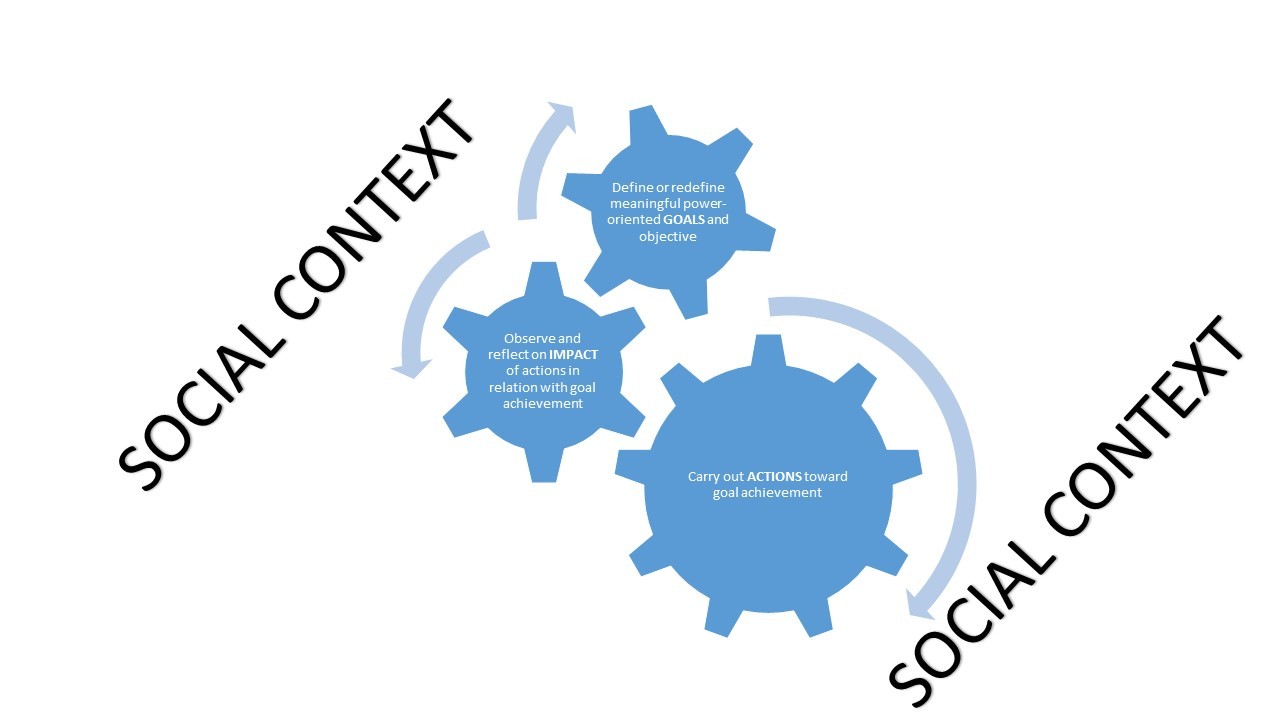“I hear and I forget. I see and I remember. I do and I understand.”
Confucius (Chinese philosopher, 551 BC – 479 BC)
Empowerment is the process of enhancing the capacity of individuals or groups to make choices and to transform those choices into desired actions and outcomes. Also in the business dictionary definition: A management practice of sharing information, rewards, and power with employees so that they can take initiative and make decisions to solve problems and improve service and performance
Individuals: On an individual level we see empowerment as building confidence, insight and understanding, and developing personal skills, for example, being able to analyze situations and communicate more effectively with others. Being empowered presupposes some level of common sense and emotional maturity and access to appropriate information and know how; it also implies someone who cares about others and is tolerant of other’s views and behaviour (within limits!)
Groups: Within a group or community, empowerment can be taken to involve building trust, co-operation and communication between members, and a prerequisite for this is that there are appropriate structures, protocols and procedures in place, with effective sanctions against those who default or abuse the system. There must be opportunities for people to meet and exchange views and opinions, and ways of recording what is agreed and done; and there must be scope for having fun and celebrating achievement.
Indicators of Empowerment
The evidence for empowerment is often anecdotal in nature, but this is still valid, especially when set alongside quantitative data. Some possible indicators that could be considered useful:
1. Confidence & Understanding: examples of people taking on new responsibilities e.g. chairing meetings, organising events and initiating new activities; or keeping clear records and good accounts, or the level of contact with local officials concerning issues that are of concern/interest to the local community.
2. Skills in Analysis & Communication: development and refinement of group aims and objectives; meeting with People, officials, customers and build an effective relationship; letter writing, and contributions to local group newsletters; preparation of group strategies and action plans.
3. Trust, Caring & Tolerance: evidence of the delegation of responsibility within the group; initiatives by groups to involve/contact people in the community work, planning, law or community development.
4. Communication & Co-operation: attendance at meetings; local group newsletters; telephone trees established for alerting members to important events/developments.
5. Access to Information: acquisition of material on group development
The Empowerment Process Model : The model defines empowerment as “a process in which a person or a group: sets intrinsically meaningful goals related to power; takes action toward those goals; and reflects on the impact of those actions, drawing on their community resources, self-efficacy, skills and knowledge.”
1. Empowerment is about power, and therefore it is both psychological and social.
People have long understood that power is not a thing a person possesses privately; it is enacted socially. It is the ability to influence others, to be heard by others, to pursue one’s own goals with the help of or despite others or to resist the demands of others. Empowerment, therefore, as a shift in power, requires something from the social world. If no one else knows about it, it is not empowerment. At the same time, the ability to influence, be heard, pursue goals or resist social pressure has profound psychological impact. Therefore, empowerment is a bridge between the psychological and the social; it is a shift in both places.
2. Empowerment is in service of goals that are intrinsically meaningful.
If it is to serve those who lack power, rather than perpetuating the existing power structure, empowerment must be consistent with the priorities and values of marginalized people. Interventions that miss the mark in this vein are often well-intentioned. Service providers or activists genuinely believe they know what their clients or communities need. They may be right, but the Empowerment Process Model urges us to be sure. This aspect of the model suggests that we need to develop an insider’s view of the priorities and values of those we mean to help, and we need to be responsive to those priorities whether or not it is convenient or fits within the culture of our particular professional vantage point.
3. Empowerment is a process.
Empowerment is a process with fits and starts; failure to reach one’s goals precipitates new thinking about those goals, new understanding of the limits one faces and new efforts to gain resources. This complex, many-chaptered process is the reason empowerment is not something that can be given as a gift. However, it can be facilitated or hindered in powerful ways. The better we understand where our clients or communities are coming from, and how they have struggled to reach their own goals before we entered the story, the more powerfully we will be able to play a positive role.



